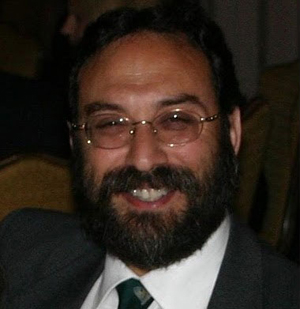David J. Gladstone, ScD

Title(s)
Adjunct Professor of Medicine
Additional Titles/Positions/Affiliations
Professor of Engineering, Thayer School of Engineering at Dartmouth
Department(s)
Medicine
Education
Harvard Medical School, Post Doctoral Fellowship 1991
Massachusetts Institute of Technology Sc.D. 1989
University of Denver, B.S.Ch. 1983
Programs
Dartmouth Cancer Center
Academic Analytics
View Profile
Contact Information
Dartmouth Medical School
HB 7999
Hanover NH 03755
Office: 1 Medical Center Drive
Phone: 603-640-6442
Fax: 603-650-6616
Email: david.j.gladstone@dartmouth.edu
Assistant: Pamela Easton
Asst. Phone: 603-650-6614
Asst. Email: Pamela.L.Easton@hitchcock.org
Professional Interests
Highly conformal radiation therapy to spare normal tissues from damage secondary to treatment. Image guided radiation therapy, biological gating of therapeutic X-ray beams, image guided brachytherapy. Cherenkov emission during radiotherapy. Ultra-high dose rate radiation therapy to elicit the FLASH normal tissue sparing effect.
Grant Information
Drug-eluding Brachytherapy Implants Co-I 5% NIH/NCI R42CA224646-02
Norris Cotton Cancer Center Core Co-Director 2% NIH/NCI $3,290,263 Grant Radiation Shared Resource
5P30 CA 23108-40
Optical Cherenkov calibration for human radiation therapy Co-PI 8% NIH $423,145 R01EB023909
Electron FLASH Radiotherapy NIH U01 CA260446-01A1 Co-PI 10% $550,000/yr
Courses Taught
ENG-56, ENG-157, ENG-167, ENG-168, ENG-192
Anesthetic Oxygen Use and Sex Are Critical Factors in the FLASH Sparing Effect. Technical note: Visual, rapid, scintillation point dosimetry for in vivo MV photon beam radiotherapy treatments. Rapid Switching of a C-series Linear Accelerator between Conventional and UHDR Research Mode with Beamline Modifications and Output Stabilization. First Monte Carlo beam model for ultra-high dose rate radiotherapy with a compact electron LINAC. Imaging and characterization of optical emission fromex vivotissue during conventional and UHDR PBS proton therapy. Anesthetic oxygen use and sex are critical factors in the FLASH sparing effect. Comparison of Tumor Control and Skin Damage in a Mouse Model after Ultra-High Dose Rate Irradiation and Conventional Irradiation. Proton and Electron Ultrahigh-Dose-Rate Isodose Irradiations Produce Differences in Reactive Oxygen Species Yields. Mean dose rate in ultra-high dose rate electron irradiation is a significant predictor for O(2)consumption and H(2)O(2)yield. Characterization of a diode dosimeter for UHDR FLASH radiotherapy. |
|